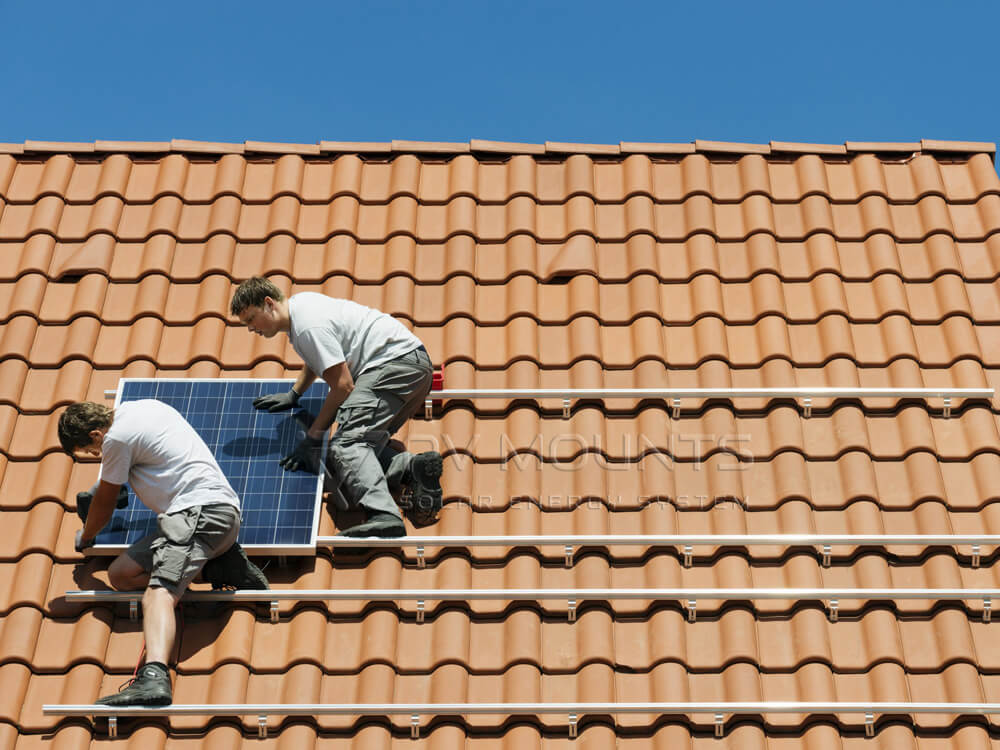In a world keen on embracing renewable energy, the installation of solar panels is becoming more than just a trend—it’s a forward-thinking necessity. Roof solar mounting plays a pivotal role in this green revolution. Each type of rooftop offers unique challenges and opportunities for solar installation, which necessitates a deep dive into the nuances of each. From the ubiquitous asphalt shingles to innovative green roofs, understanding the right way to mount solar panels can make a significant difference in energy efficiency and sustainability. Let’s explore the intricacies of various rooftop materials and their compatibility with solar technology.
Asphalt Shingles
The quintessential choice for residential housing in the U.S., asphalt shingles are as common as apple pie. They offer a cost-effective and accessible solution for homeowners, making them an excellent candidate for solar panel installations. However, before you jump on the solar bandwagon, it’s crucial to check that your shingles are in shipshape. Since solar installations are a long-term commitment, ensuring your roof’s integrity is paramount to avoid mid-course corrections.
Solar Considerations for Asphalt Shingles
Mounting solar panels on asphalt shingles requires precision. Standard penetration methods are employed, but they must be executed flawlessly to prevent leaks. It’s a bit like sewing—every stitch must be perfect. The good news? Once installed, they promise a smooth ride toward energy savings.
Metal Roofs
Metal roofs come in two stylish varieties: standing seam and corrugated. Not only are they aesthetically pleasing, but they’re also champions of durability, boasting a lifespan that can make even the Great Pyramids jealous.
Solar Considerations for Metal Roofs
If your home sports a standing seam metal roof, you’re in luck. Solar panels can be mounted using clamps that attach directly to the seams, bypassing the need for penetration. This method is akin to clipping on earrings—simple, reversible, and stylishly effective, making it a preferred choice for those seeking a blend of efficiency and aesthetics.
Tile Roofs
Tile roofs, whether clay, concrete, or slate, offer a Mediterranean allure that can significantly enhance the curb appeal of any home. However, their elegance comes with a need for careful handling, especially when adding modern technology like solar panels.
Solar Considerations for Tile Roofs Imagine
dressing up a delicate porcelain doll—this is how one must approach mounting solar panels on tile roofs. Custom brackets are often required to navigate the fragility of tiles, ensuring that the beauty of your roof remains unscathed by the functional addition of solar panels.
Flat Roofs
Commonly found in crowning commercial buildings, flat roofs offer a playground of potential for solar installations. Their expansive, unobstructed surfaces are perfect for laying down rows of solar panels.
Solar Considerations for Flat Roofs
Flat roofs require a bit of geometry. Since they lack natural angling, additional framing is often necessary to tilt the panels towards the sun—an essential step for maximizing solar exposure. Ballasted systems, which leverage weight to keep panels in place, are a popular choice as they avoid penetrating the roof.
Rubber (EPDM) Roofs
Rubber roofs might not win any beauty contests, but when it comes to functional, long-lasting commercial roofing, they’re hard to beat. Made from single-ply rubber, these roofs are found in scenarios demanding high durability.
Solar Considerations for Rubber Roofs
Similar to flat roofs, rubber roofs often employ ballasted systems for mounting solar panels. However, for an added layer of security, adhesive systems can also be used, ensuring that the panels stick to the roof without the need for penetration—think of it as double-sided tape for your roof.
Wood Shingles/Shakes
Wood shingles or shakes provide a rustic, natural aesthetic that can be quite charming. However, their beauty comes with concerns about fire resistance and durability, especially under the duress of solar installations.
Solar Considerations for Wood Shingles
Mounting solar panels on wood shingles is akin to walking a tightrope. It requires a delicate balance—ensuring the structural integrity of the roof while installing the solar system. The process demands meticulous planning and, often, more intensive labor to prevent any damage that could compromise both the roof and the home below.
Green Roofs
Green roofs are a testament to architectural innovation, combining the lushness of nature with the utility of urban building. They are designed with environmental sustainability in mind, supporting vegetation that can improve building insulation and reduce urban heat islands.
Solar Considerations for Green Roofs
Integrating solar panels with a green roof is like harmonizing two notes in a symphony—it needs to be done with precision and care. The added weight of vegetation and soil requires a thorough structural assessment to ensure the roof can support both the green and the tech elements harmoniously.
Installation Considerations
Before you set out to crown your building with solar panels, a few critical factors need consideration:
Roof Condition: Just as you wouldn’t build a castle on sand, you shouldn’t mount solar panels on a compromised roof. Ensuring the structural integrity of your roof is the first step in a successful solar installation.
Orientation and Angle: The direction your roof faces and its angle can significantly influence the effectiveness of your solar panels. Ideally, roofs should face south with a slope between 15 to 40 degrees to capture optimal sunlight.
Shading: Shadows cast by trees, buildings, or other structures can be the bane of solar efficiency. A clear, unobstructed path to the sun is crucial for maximizing your solar investment.
Local Regulations and Incentives: Navigating the bureaucratic seas of local regulations and incentives can be daunting, but it’s a necessary voyage. Understanding these can help not only in compliance but also in reaping possible benefits from government or local energy incentives.
Conclusion
Choosing the right roof for solar mounting is not just about aesthetics or durability. It’s about making a long-term investment in your home’s efficiency and environmental footprint. By understanding the unique characteristics and requirements of each roof type, you can make informed decisions that will optimize your solar installation, reduce energy costs, and contribute to a more sustainable future. Remember, the sun is a generous ally in the quest for renewable energy—make the most of it with the right roof over your head.
















